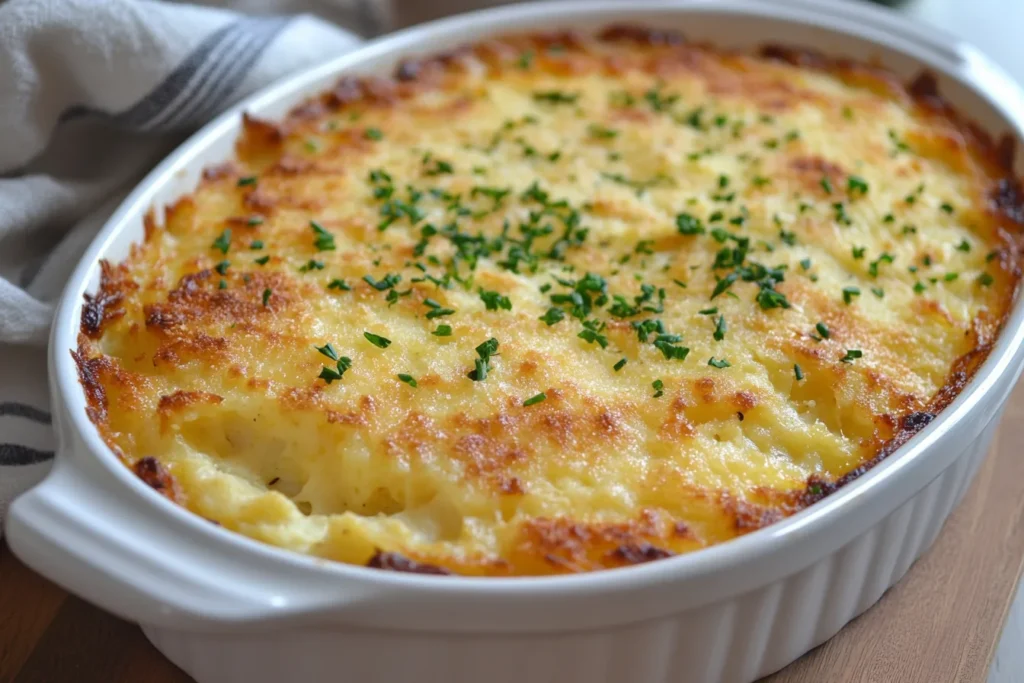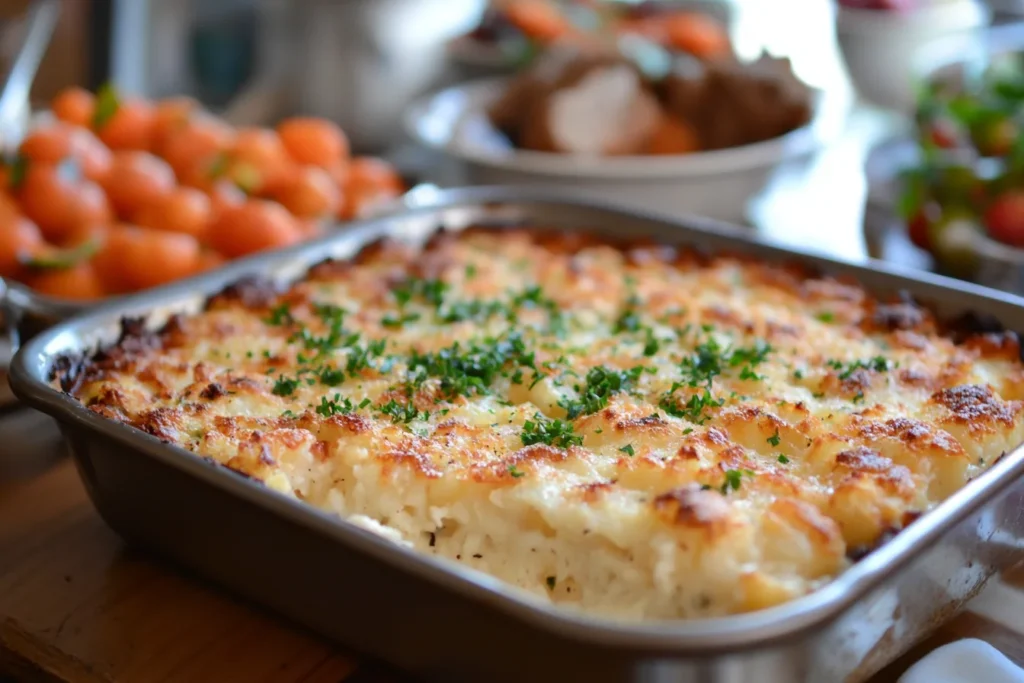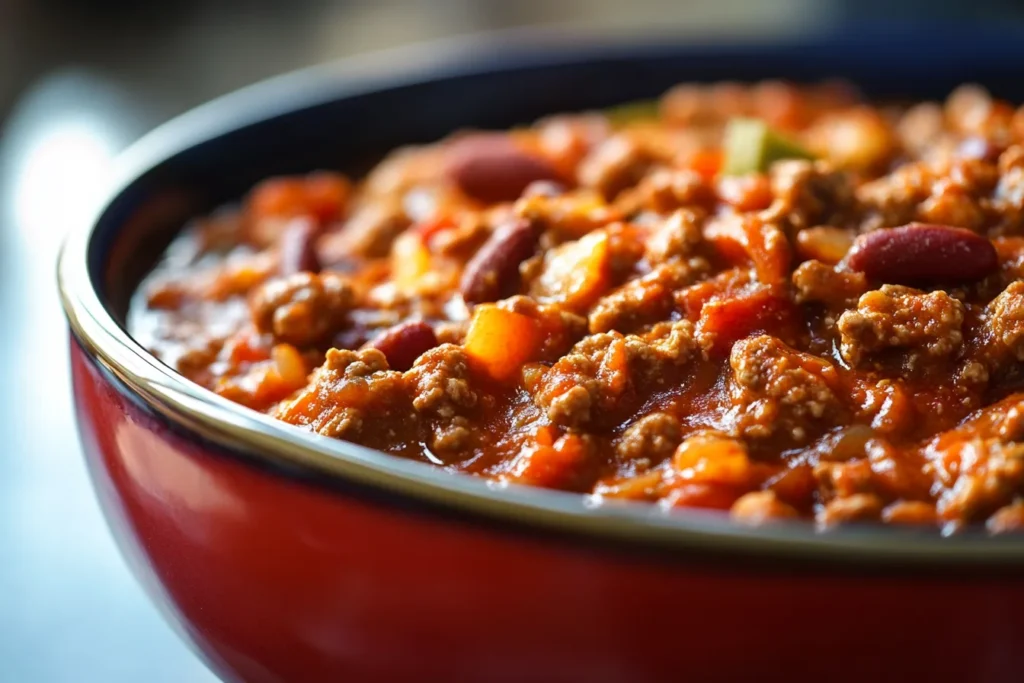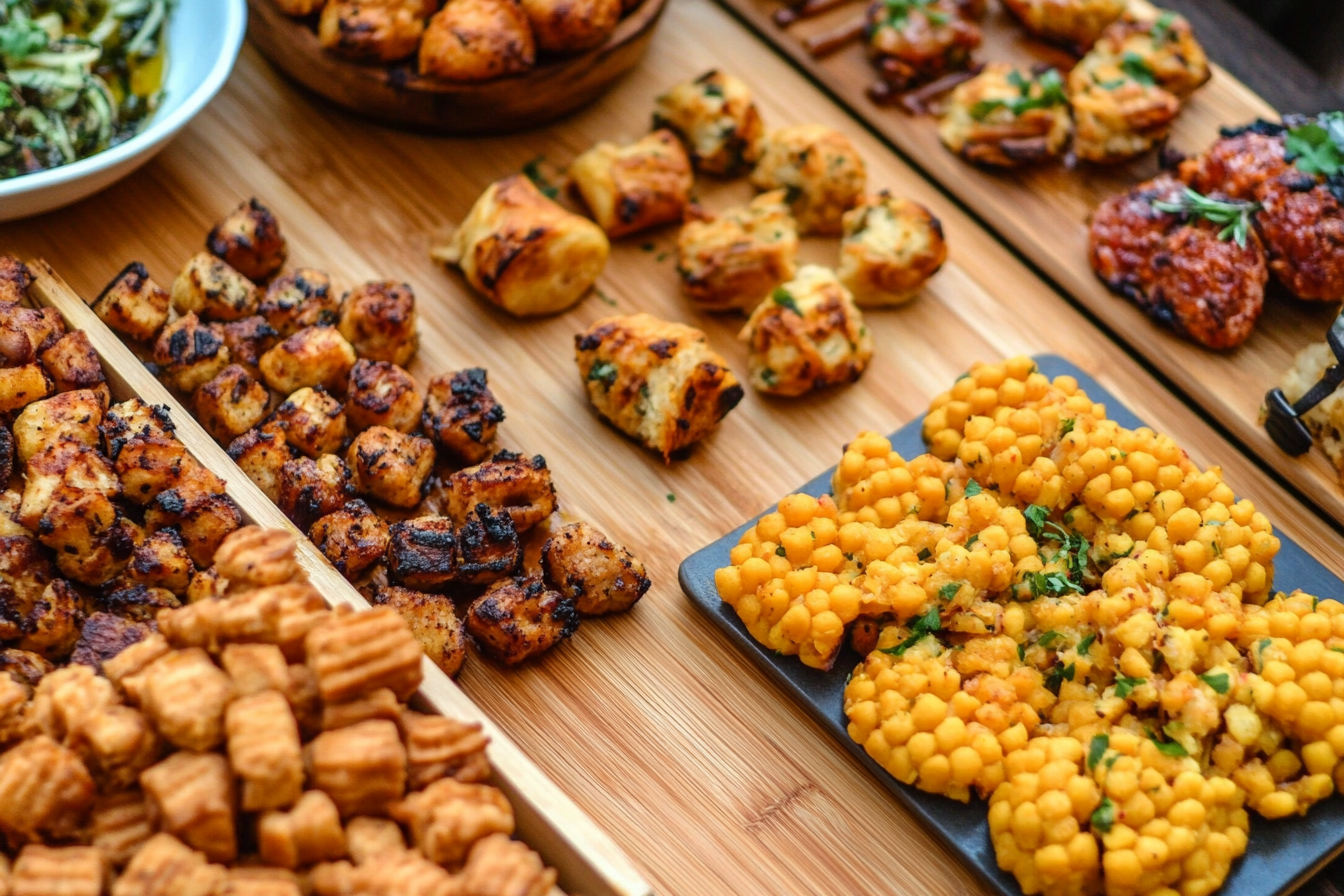What Is a Potluck? Definition and Purpose
“Understanding potluck etiquette is key to creating a successful and enjoyable gathering. By following simple guidelines, you can contribute meaningfully, respect the host, and ensure everyone has a great time at the event.”
The purpose of a potluck extends beyond the food—it fosters community, creativity, and inclusivity. Guests get a chance to showcase their culinary skills or favorite dishes while indulging in the diverse contributions of others. The collaborative nature of potlucks makes them perfect for family reunions, office parties, neighborhood gatherings, or casual get-togethers.
Understanding the essence of potlucks is key to embracing their spirit. For more insights into why community-centric events matter, check out this comprehensive guide on event planning.

Why Unspoken Rules Matter for a Successful Potluck
Though potlucks are inherently casual, adhering to certain unspoken rules ensures a seamless experience for everyone. Rules help avoid confusion, minimize waste, and ensure everyone enjoys the event without undue stress.
Some examples of these rules include:
- Communicating with the host about what to bring.
- Ensuring your dish complements others’ contributions.
- Being mindful of dietary restrictions and allergies.
These seemingly minor considerations prevent potential hiccups, such as having multiple identical dishes or forgetting to account for vegetarians. They also uphold the spirit of collaboration and mutual respect that potlucks are built upon.
To navigate the nuances of social dining, visit this article about dining etiquette.
Communicating with the Host: What to Bring and When
Clear communication with the host is crucial to a well-organized potluck. Ask these key questions:
- What type of dish is needed (appetizer, main course, dessert)?
- How many guests are expected?
- Are there any special dietary preferences or restrictions to consider?
Hosts often appreciate proactive guests who check in early, as this allows for better coordination. Moreover, timely updates ensure your dish aligns with the overall menu and avoids overlap.
Coordinating Dishes to Avoid Duplicates
The last thing any potluck needs is five pasta salads and no desserts. Coordinating with the host or fellow guests can help prevent such mishaps. Tools like shared Google Sheets or apps like SignUpGenius are excellent for organizing dish contributions.
When deciding what to bring, aim for balance. If you’re unsure, lean towards versatile options like casseroles, salads, or finger foods. These dishes are generally well-received and easy to share.
Choosing the Right Dish: Balancing Ease and Effort
The perfect potluck dish strikes a balance between ease of preparation and visual appeal. While it’s tempting to bring something elaborate, practicality should guide your decision. Consider these factors:
- Will the dish stay fresh during transportation?
- Can it be served at room temperature?
- Does it require minimal setup at the venue?
Examples of crowd-pleasers include deviled eggs, baked ziti, and fruit platters. Remember, simplicity often outshines complexity in potluck settings.
Considering Dietary Restrictions and Preferences
Today’s diverse dietary landscape calls for inclusive meal planning. Be mindful of common restrictions, such as:
- Vegetarian or vegan options.
- Gluten-free choices.
- Dishes without nuts, as nut allergies are prevalent.
Labeling your dish with a brief description of ingredients is a thoughtful touch, ensuring all guests can enjoy the spread without concerns. For more inclusive meal ideas, explore this recipe collection.
Preparing Portions Appropriate for the Group Size
Portion control is essential at potlucks. A good rule of thumb is to prepare enough to serve 8–10 people. If the gathering is larger, coordinate with the host to adjust quantities or supplement your dish with an easy side, such as bread or chips.
Avoid over-preparing, as this can lead to excessive leftovers or food wastage. Striking the right balance ensures everyone gets a taste without overwhelming the table.
Ensuring Freshness and Safe Transportation of Food
Food safety is non-negotiable when contributing to a potluck. To maintain freshness:
- Use insulated containers for hot dishes and coolers for cold ones.
- Avoid perishable ingredients that might spoil if left unrefrigerated.
- Secure your dish to prevent spillage during transit.
Arriving with a well-preserved dish shows respect for the host and ensures everyone’s health and enjoyment.

The Role of Advance Preparation: Avoiding Last-Minute Stress
Procrastination can turn a fun event into a stressful ordeal. Plan your dish and gather ingredients at least 2–3 days in advance. Opt for dishes that can be prepared partially or fully the day before.
Advance preparation not only reduces your stress but also gives you more time to enjoy the event. For additional tips on efficient meal planning, check out this time-saving guide.
Understanding Potluck Etiquette
What Is a Potluck? Definition and Purpose
A potluck is a communal gathering where each guest contributes a dish to share. These events are centered on the joy of variety, collaboration, and the social connections formed over shared meals. Unlike formal dinners, potlucks thrive on the concept of communal participation, ensuring that no single individual bears the entire responsibility of feeding the group.
The purpose of a potluck extends beyond the food—it fosters community, creativity, and inclusivity. Guests get a chance to showcase their culinary skills or favorite dishes while indulging in the diverse contributions of others. The collaborative nature of potlucks makes them perfect for family reunions, office parties, neighborhood gatherings, or casual get-togethers.
Understanding the essence of potlucks is key to embracing their spirit. For more insights into why community-centric events matter, check out this comprehensive guide on event planning.
Why Unspoken Rules Matter for a Successful Potluck
Though potlucks are inherently casual, adhering to certain unspoken rules ensures a seamless experience for everyone. Rules help avoid confusion, minimize waste, and ensure everyone enjoys the event without undue stress.
Some examples of these rules include:
- Communicating with the host about what to bring.
- Ensuring your dish complements others’ contributions.
- Being mindful of dietary restrictions and allergies.
These seemingly minor considerations prevent potential hiccups, such as having multiple identical dishes or forgetting to account for vegetarians. They also uphold the spirit of collaboration and mutual respect that potlucks are built upon.
To navigate the nuances of social dining, visit this article about dining etiquette.
Communicating with the Host: What to Bring and When
Clear communication with the host is crucial to a well-organized potluck. Ask these key questions:
- What type of dish is needed (appetizer, main course, dessert)?
- How many guests are expected?
- Are there any special dietary preferences or restrictions to consider?
Hosts often appreciate proactive guests who check in early, as this allows for better coordination. Moreover, timely updates ensure your dish aligns with the overall menu and avoids overlap.
Coordinating Dishes to Avoid Duplicates
The last thing any potluck needs is five pasta salads and no desserts. Coordinating with the host or fellow guests can help prevent such mishaps. Tools like shared Google Sheets or apps like SignUpGenius are excellent for organizing dish contributions.
When deciding what to bring, aim for balance. If you’re unsure, lean towards versatile options like casseroles, salads, or finger foods. These dishes are generally well-received and easy to share.
Choosing the Right Dish: Balancing Ease and Effort
The perfect potluck dish strikes a balance between ease of preparation and visual appeal. While it’s tempting to bring something elaborate, practicality should guide your decision. Consider these factors:
- Will the dish stay fresh during transportation?
- Can it be served at room temperature?
- Does it require minimal setup at the venue?
Examples of crowd-pleasers include deviled eggs, baked ziti, and fruit platters. Remember, simplicity often outshines complexity in potluck settings.
Considering Dietary Restrictions and Preferences
Today’s diverse dietary landscape calls for inclusive meal planning. Be mindful of common restrictions, such as:
- Vegetarian or vegan options.
- Gluten-free choices.
- Dishes without nuts, as nut allergies are prevalent.
Labeling your dish with a brief description of ingredients is a thoughtful touch, ensuring all guests can enjoy the spread without concerns. For more inclusive meal ideas, explore this recipe collection.
Preparing Portions Appropriate for the Group Size
Portion control is essential at potlucks. A good rule of thumb is to prepare enough to serve 8–10 people. If the gathering is larger, coordinate with the host to adjust quantities or supplement your dish with an easy side, such as bread or chips.
Avoid over-preparing, as this can lead to excessive leftovers or food wastage. Striking the right balance ensures everyone gets a taste without overwhelming the table.
Ensuring Freshness and Safe Transportation of Food
Food safety is non-negotiable when contributing to a potluck. To maintain freshness:
- Use insulated containers for hot dishes and coolers for cold ones.
- Avoid perishable ingredients that might spoil if left unrefrigerated.
- Secure your dish to prevent spillage during transit.
Arriving with a well-preserved dish shows respect for the host and ensures everyone’s health and enjoyment.
The Role of Advance Preparation: Avoiding Last-Minute Stress
Procrastination can turn a fun event into a stressful ordeal. Plan your dish and gather ingredients at least 2–3 days in advance. Opt for dishes that can be prepared partially or fully the day before.
Advance preparation not only reduces your stress but also gives you more time to enjoy the event. For additional tips on efficient meal planning, check out this time-saving guide.
Part 2: Participation and Engagement
Setting Up Your Contribution
Arriving at the potluck with your dish is only part of the process; presentation matters. Once you’re at the event, focus on seamlessly integrating your contribution into the existing spread.
- Find out where your dish fits best—appetizers, mains, or desserts.
- Check if the host has a specific arrangement or theme for the table.
- Bring any decorative touches that align with the potluck vibe (e.g., festive napkins or a garnished platter).
Taking these steps demonstrates thoughtfulness and ensures your dish catches the eye among an array of options.
Labeling Your Dish for Clarity (Allergens, Ingredients)
Clear labeling is a small detail that carries significant weight in a potluck setting. With diverse dietary needs, guests appreciate knowing what’s in each dish. Use simple tags or cards to indicate:
- Allergens like nuts, dairy, or gluten.
- Whether the dish is vegetarian, vegan, or contains meat.
- Unique or less common ingredients.
This transparency not only helps guests make informed choices but also showcases your consideration for their needs. To see how to create effective food labels, explore this DIY labeling tutorial.
Bringing Necessary Serving Utensils
One often-overlooked aspect of potluck preparation is serving utensils. Without these, your dish might sit untouched, even if it’s a crowd favorite. Here’s what to consider:
- Bring a serving spoon, tongs, or whatever tool suits your dish.
- Label your utensils to ensure they make it back home with you.
- Opt for reusable or eco-friendly options to reduce waste.
Planning this detail enhances the overall dining experience and makes serving more efficient.

Arriving on Time: Respecting the Host’s Schedule
Punctuality is a sign of respect for the host’s effort in organizing the event. Arrive at least 10–15 minutes before the scheduled start time to:
- Set up your dish without disrupting the flow.
- Assist the host with any last-minute arrangements.
- Mingle with early arrivals, setting a warm tone for the gathering.
Being on time ensures your contribution is enjoyed at its best and aligns with the host’s vision for the event.
How to Present Your Dish Effectively at the Table
Effective presentation elevates your dish from ordinary to memorable. Follow these tips for an appealing setup:
- Use an attractive serving dish that matches the potluck’s theme.
- Garnish your food with fresh herbs, edible flowers, or colorful elements.
- Ensure everything is easy to serve and eat—nobody wants to struggle with a messy dish.
Remember, presentation is your chance to make a lasting impression without saying a word.
Balancing Conversations While Sharing Food
Potlucks are as much about the people as they are about the food. While sharing your dish or sampling others, engage in light, inclusive conversations. Topics to consider:
- The inspiration behind your dish.
- Asking others about their favorite contributions.
- Complimenting dishes you’ve enjoyed.
Avoid monopolizing conversations or veering into divisive topics. Striking this balance fosters a positive, engaging atmosphere.
Sampling a Variety: Avoiding Overindulgence in One Dish
One of the joys of potlucks is the diversity of food. However, it’s crucial to sample in moderation. Here’s how to do it right:
- Start with small portions of each dish to leave room for more.
- Avoid piling your plate with just one item, even if it’s your favorite.
- Save seconds for later to ensure everyone has a chance to enjoy the offerings.
This mindful approach encourages inclusivity and lets you savor the full range of flavors.
Giving Credit: Acknowledging and Thanking Contributors
Gratitude is a cornerstone of potluck etiquette. Take the time to compliment and thank fellow guests for their dishes. A few examples:
- “The seasoning in this pasta is perfect—did you make it yourself?”
- “This dessert is so unique! I’d love the recipe if you’re willing to share.”
Acknowledging others’ efforts builds connections and strengthens the communal spirit of the event.
What to Do If Your Dish Is a Hit (or Miss)
If your dish is a crowd favorite, enjoy the compliments graciously. Consider offering the recipe or sharing tips if guests inquire. On the flip side, if your dish is less popular:
- Don’t take it personally—tastes vary widely.
- Observe what worked well for other dishes as inspiration for next time.
- Use the opportunity to learn and improve.
Both successes and misses are part of the potluck experience and should be embraced with humility.
Sharing Recipes: Encouraging Post-Potluck Connections
A potluck doesn’t have to end when the food is gone. Sharing recipes is a fantastic way to keep the connections alive. Here’s how:
- Have printed recipe cards ready to hand out for popular dishes.
- Offer to email the recipe to interested guests for convenience.
- Suggest creating a shared folder or group for all the recipes from the event.
This practice extends the communal spirit and encourages future collaboration.
Part 3: Cleanup and Post-Event Etiquette
Participating in Cleanup: A Group Effort
One of the most thoughtful gestures you can extend at a potluck is helping with the cleanup. While the host may not expect assistance, offering to pitch in shows your appreciation for their effort. Start by taking care of your contributions—clear away your dish, collect any serving utensils, and wipe down the area where your food was displayed.
Additionally, offer to assist with general tasks, such as throwing out trash, washing dishes, or packing up leftovers. If others are already helping, join in—it’s a quick and collaborative way to tidy up while reinforcing the sense of community that potlucks celebrate. Your small efforts will make a big difference to the host, who is likely tired after organizing and hosting the event.
Taking Back Leftovers: The Dos and Don’ts
At the end of the potluck, there’s often food left over, and deciding what to do with it can be tricky. First, check with the host to see if they’d like to keep any portions of your dish; they may appreciate having extra food for themselves or their family. If the host doesn’t want to keep your leftovers, pack them neatly in containers you’ve brought along for this purpose. Be sure to leave the space tidy and free of unnecessary clutter, including disposable containers or forgotten lids.
Avoid assuming that the host will deal with your leftovers—it’s polite to manage your own contributions. If your dish was largely untouched, don’t be discouraged; instead, see it as a learning experience and an opportunity to refine your recipe for the next gathering.
Leaving the Host’s Space Clean and Tidy
A clean space is a lasting thank-you to the host. Before leaving, ensure your area is spotless. Double-check that no items—such as serving utensils or containers—are left behind, as this can create extra work for the host later. If the gathering was held in the host’s home, offer to assist with tasks like wiping down surfaces, rearranging furniture, or taking out the trash.

